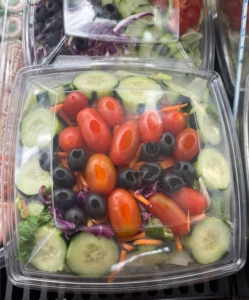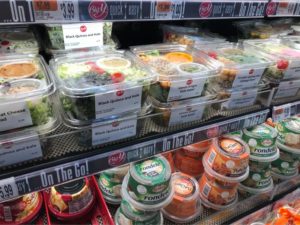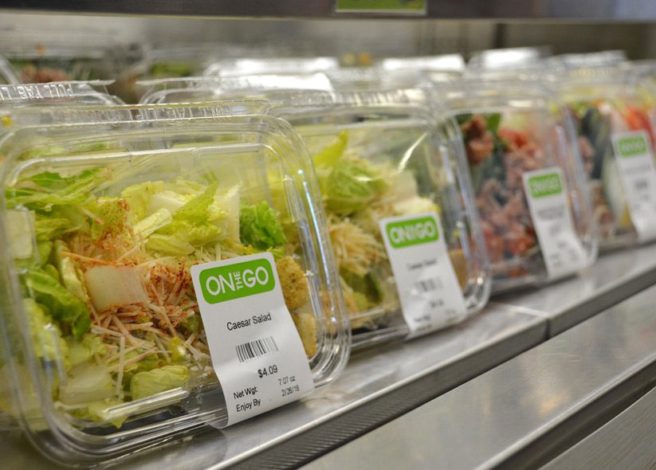Listen to the audio recording of this blog post or check out the featured Podcast about this topic.
At a Glance
- Tamper-protected food packaging builds consumer trust, signaling safety and care from shelf to home.
- Clear tamper evidence deters theft and tampering, keeping products intact and brands protected.
- Implementation costs and design impact usability, so balance security with consumer friendliness.
- Success hinges on seamless integration — educate consumers, streamline production, and ensure reliable performance.
Food industry professionals know tamper-protected food packaging directly impacts their bottom line. It prevents tampering while visibly communicating safety to increasingly cautious consumers. Smart packaging choices build brand trust, satisfy regulations, and may even extend product shelf life.
Most consumers instinctively reach for products with visible safety measures. After all, who wants to wonder if someone’s already taste-tested your noodles? (Or worse: touched the food with their bare hands!)
For more than 55 years, Inline Plastics has navigated the transformation of fresh food packaging. It began with simple containers and evolved into complex security systems. We know what works and what doesn’t regarding packaging that protects profits and products.
In this article, you’ll learn when tamper-protected packaging is worth it. You’ll also see which options work best and when simpler packaging could be the better choice. Consider this your crash course in choosing packaging that keeps your customers happy.
What Makes Packaging “Tamper-Protected”?
It’s important to note that when we discuss tamper protection, there are two features (not all packaging comes with both):
Tamper-Evident Packaging
 Tamper-evident food packaging clearly indicates if someone has opened or tried to access it. It often has features like tear strips, breakaway bands and other breakaway features, or sealed film that changes when opened.
Tamper-evident food packaging clearly indicates if someone has opened or tried to access it. It often has features like tear strips, breakaway bands and other breakaway features, or sealed film that changes when opened.
The key point is that these features can’t be restored to their original state — once broken, the evidence is permanent.
There’s proof the act has been committed.
Snack bandits trying to be covert have failed.
Game over.
Standard packaging may close securely but lacks this permanent visual proof of the first opening.
Tamper-Resistant Packaging
Tamper-resistance is a technology that is often non-visual and makes it difficult for someone to enter the package in the first place.
Which is Better? Tamper-Evident or Tamper-Resistant?
Ideally, you want a package that demonstrates both aspects of tamper protection. If it doesn’t, it’s important to understand what the package offers when looking at solutions, as the additional features are more complex in their development and manufacturing. It depends on what level of security is desired. Will a visual cue suffice? If so, then a tamper-evident solution might be what you are looking for. Or do you require total tamper protection that has both tamper evidence and tamper resistance? It might come as no surprise what usually drives the decision: cost.
Cost Considerations: The Primary Decision Driver
You guessed correctly: The decision often comes down to numbers.
Operators must constantly balance safety features against their bottom line. Tamper-protected packaging has many benefits. However, businesses with tight margins often choose budget-friendly options when they can. In this case, they may choose a tamper-evident feature such as a simple sticker over the opening to reduce costs. It is important to note the labor costs of applying stickers and labels to packaging. It might make you question whether simple features like stickers are even worth it.
Cost-conscious businesses offering lower-priced products frequently opt for non-tamper-protected packaging. The higher price point of packaging with sophisticated features in tamper-evidence and tamper-resistance stems from several factors. The manufacturing of these packages demands more complex designs and more intricate tooling processes, which creates a valuable premium feature for the final product.
Tamper-protected food packaging has a clear value proposition. While it may need slightly more material to achieve the desired outcomes, this feature adds value. It creates a premium feel, much like how consumers see top-tier brands versus value ones in other categories. No need for sharp scissors (yikes!) or those sticky labels that seem to leave tacky glue on your fingers or the package.
Alternative Anti-Tampering Solutions
 Food service businesses can find ways to balance costs and safety. There are flexible solutions that still meet safety standards.
Food service businesses can find ways to balance costs and safety. There are flexible solutions that still meet safety standards.
Tamper-Evident Bags
Many delivery services use special tamper-evident bags. These bags allow restaurants to choose standard, less expensive food containers. They still keep food safe from tampering during delivery. This method lets businesses add one tamper-evident product instead of switching out various to-go containers. This strategy often saves money in the long run while still providing the safety assurance consumers expect.
While tamper-evident bags help improve food safety, customer trust, and delivery integrity, they introduce cost, operational, environmental, and customer experience challenges that restaurants must carefully weigh. Many restaurants strike a balance by using these bags selectively — for example, only on third-party delivery orders or in high-theft-risk areas.
Shrink Bands
Shrink bands offer a compromise solution between full tamper-evident and tamper-resistant packaging and standard options. These bands go around container lids. They shrink when heated, making a tamper-evident and tamper-resistant seal.
The downside to shrink bands involves the use of a heating tunnel to make the bands shrink. It consumes a lot of energy and may affect the product contents regardless of their intended temperature.
Shrink bands work well for specific products:
- Nuts and candy items
- Foods packaged at processing facilities (not in-store)
- Two-piece containers like platters
In the past, processors preferred shrink bands with standard packaging. This was cheaper than investing in containers that had built-in tamper-protected features. That cost advantage is… well… shrinking. Rising labor costs for applying bands have reduced the price gap between methods. This trend makes integrated tamper-evident packaging more competitive.
It’s important to note that if these bands are completely removed, there’s no proof they ever existed, completely defying their desired intent.
The Hidden Benefit: Extended Shelf Life
 Food safety concerns usually lead to tamper-protected choices. Yet, there is another key benefit: it may extend shelf life.
Food safety concerns usually lead to tamper-protected choices. Yet, there is another key benefit: it may extend shelf life.
Food businesses see that tamper-protected solutions can help food last longer. This also means less waste. Tight perimeter seals (when used) significantly minimize air exposure, reducing oxygenation and allowing products to remain fresh on the shelf for extended periods.
This benefit translates directly to your bottom line.
Even a single extra day can lead to significant cost savings across the fresh food category—reducing waste, improving inventory efficiency, and maximizing product value.
Disclaimer: It is essential for food processors and retailers to conduct controlled shelf-life studies when selecting and evaluating tamper-protected food packaging. Such evaluations are critical for assessing the impact on product integrity, safety, and operational efficiency within their specific supply chains.
Making Your Decision
When deciding on tamper-protected and non-tamper-protected packaging, several factors should influence your choice. Upon evaluating these key factors, prioritize tamper protection as an essential element:
- Positioning of retail departments is key. Fresh foods in perimeter departments usually gain from tamper-protected solutions.
- Product characteristics are crucial. Products with liquids and juices need strong containers. This helps prevent leaks and contamination.
- Customer expectations should guide your decision as well. Premium products deserve premium packaging. It reflects their quality and the care taken at every step of the supply chain.
- Finally, the overall cost impact will be evaluated by factoring in reduced waste and spoilage alongside unit costs. The initial higher price point of tamper-protected packaging may be offset by extended shelf life and reduced product loss.
When A Visual Tamper-Evident Sticker Will Do
It would be easy to say there is simply “no situation” where a simple tamper-protection solution, such as a sticker or a staple, will suffice. While stickers do work in these scenarios, they are not ideal for products requiring high-security protection, nor for packaging exposed to rough handling or extreme environments. Always assess the product’s risk level, regulatory requirements, and distribution complexity before relying solely on stickers. Here’s when a tamper-evident sticker is often enough:
- Clear visibility of seal breach: When the sticker is placed across an opening seam or closure in a way that tearing or removal is immediately noticeable, it can serve as an adequate deterrent.
- Regulatory compliance without over-engineering: In cases where regulations require tamper-evidence but don’t specify rigid mechanical barriers, stickers offer a compliant and budget-friendly approach.
It’s worth noting the consumer appeal (or lack thereof) with stickers on packages. Stickers may block the food you are trying to showcase and leave behind a sticky residue that’s frustrating to consumers.
The Choice is Yours
Smart packaging decisions balance business requirements with consumer expectations in today’s competitive marketplace. Manufacturing improvements are closing the gap in costs. Each option brings different benefits depending on what you need. Tamper-protected food packaging boosts consumer trust. Meanwhile, standard packaging might save costs for some product types.
Regardless of the package, you should always test for shelf life. Tamper-resistant options may extend shelf life with tight seals, keeping the environment inside airtight.
Consider your specific products, retail environment, and customer expectations when making this choice. The right packaging, be it tamper-protected or standard, highlights your focus on quality and value.
Need assistance finding tamper-protection solutions? Talk to us. We can help guide you.

